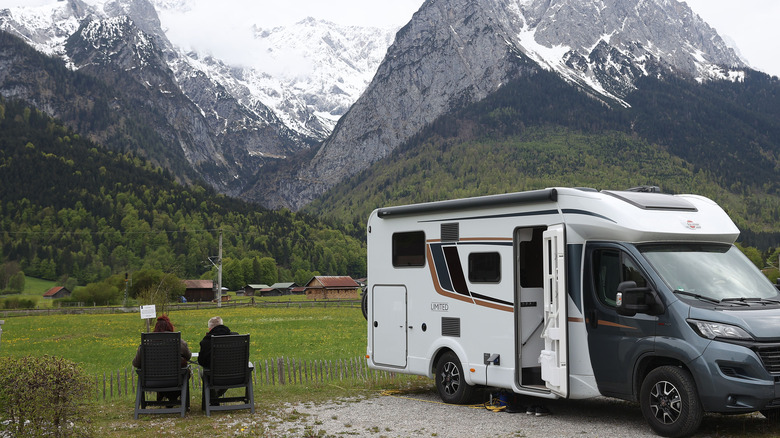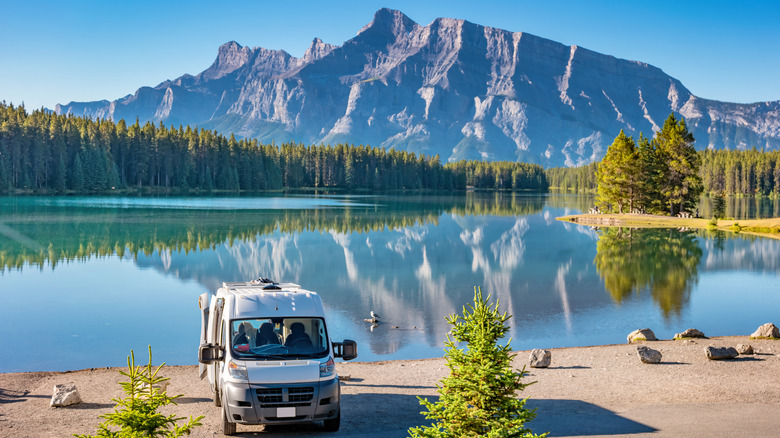We may receive a commission on purchases made from links.
Picture this: You’re parked at a scenic 8,000-foot elevation, surrounded by stunning mountain views and wide open sky. You reach into your RV fridge for a cold drink, only to find it’s disappointingly lukewarm. Turns out, one of the most frustrating quirks of high-altitude RV camping comes down to physics. When you’re that far up, the air gets thinner — and with less oxygen available, your propane-powered appliances can struggle.
To plan a successful RV trip higher up in the mountains, it’s important to keep these factors in mind ahead of your trip. Propane appliances, like your RV refrigerator, rely on a precise fuel-to-oxygen ratio to operate efficiently. So when oxygen levels drop, your fridge may not cool food as well or it could burn out completely. In a pinch, keep a quality cooler on board to store your food during an outage.
Many RV fridge manufacturers recommend switching to electric mode at higher elevations to avoid performance issues. On the other hand, some experienced RV owners have suggested adjusting the propane pressure lower on the fridge. This should reduce the percentage of propane in the mix and compensate for the drop in oxygen — however it’s not a guaranteed fix. But if you do have luck with this hack, just remember to adjust it back when you go back to regular elevation.
More RV camping tips for high altitude
To keep your RV safe and functional while camping at high altitudes, make sure you’ve gotten it tuned up ahead of your trip — this means the engine, braking, and heating and cooling systems are all running smoothly. Your RV generator will also need to be adjusted to the appropriate elevation setting. For maximum reliability, RV owners can buy a backup generator with adjustable carburetors for high altitude conditions. If you’re not an RV owner and are having an RV rental delivered to your campsite, contact the owner or company ahead of time to ask about the high-altitude amenities and preparations they’ve made to their rig.
Your cooking process at high altitudes will need some adjusting as well because reduced atmospheric pressure means water boils at a lower temperature — so it takes longer to cook food. Turning up the heat won’t help, either, and the water will just evaporate quicker and lead to a dry, disappointing meal. To adjust your recipes for high altitude, increase the cooking time by about 25%. Keep a food thermometer on hand to make sure your food is cooked properly at any elevation. You’ll need more propane or extra campfire wood as well to account for a longer cook.
It’s also wise to increase the water in any recipe, as it evaporates faster at higher elevation. Cook times and ingredient measurements can always vary, so look for recipes with adjusted instructions or experiment on your own — and always keep an eye on your meal throughout the process for the best results. Pressure cookers, like this Instant Pot mini electric cooker, are a handy hack for high altitude cooking, as they naturally increase the atmospheric pressure and boiling temperature.



